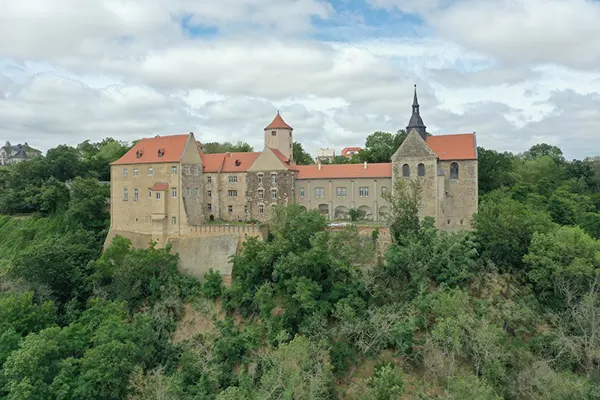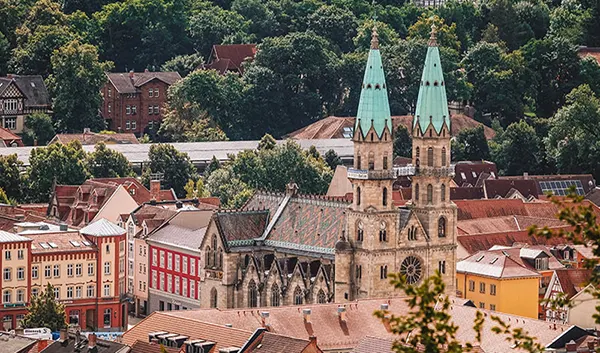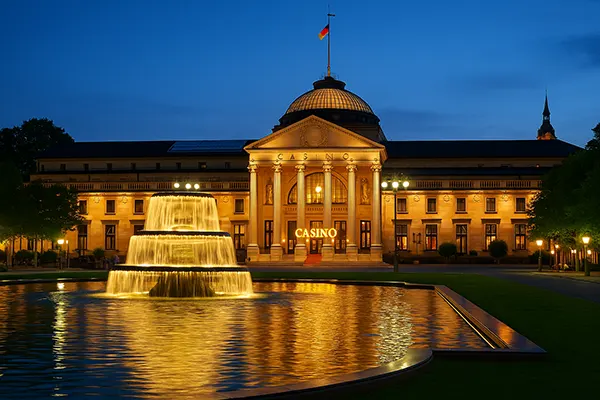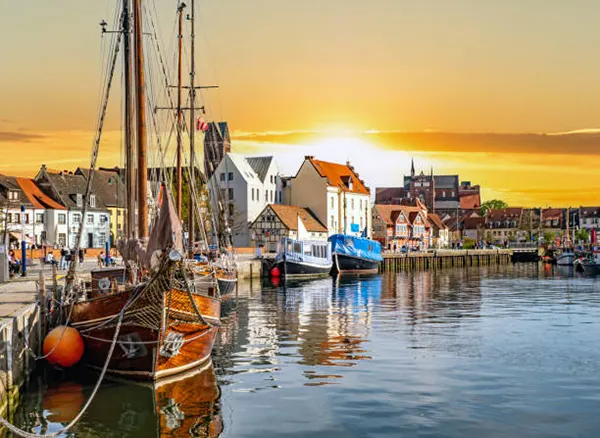
Wismar — Gothic Port on the Baltic Sea: Between the Hanseatic League and Modernity
Wismar, a city nestled on the northern coast of Germany, is a remarkable example of preserved Brick Gothic architecture shaped by centuries of maritime trade and Hanseatic influence. Despite its relatively modest size and limited tourist fame, Wismar stands as a living testament to the Baltic region’s commercial and cultural evolution. This article explores Wismar’s unique position in European history, from its days as a Hanseatic powerhouse to its carefully managed integration of modern urban life.
Gothic Heritage and Maritime Identity
Wismar’s architectural landscape is dominated by imposing red-brick Gothic churches, medieval warehouses, and narrow merchant streets, all of which reflect the city’s flourishing period in the 13th–15th centuries. As part of the Hanseatic League, Wismar developed rapidly, with trade routes stretching across the Baltic and North Seas. The city’s location made it a strategic port for transporting grain, timber, and salt, reinforcing its reputation as a commercial hub.
Three main Gothic churches — St. Nikolai, St. Georgen, and St. Marien — represent not only religious centres but also civic pride and architectural ambition. Built by skilled craftsmen and funded by prosperous merchants, these structures were essential landmarks for sailors arriving at the port. Their scale and sophistication rival those found in Lübeck or Stralsund, fellow Hanseatic cities of similar stature.
The city centre, now part of the UNESCO World Heritage Site designation shared with Stralsund, remains largely intact. Thanks to thoughtful preservation policies, Wismar avoided major war damage and has become a showcase of late-medieval urban planning. Its street grid and waterfront maintain their original shapes, allowing visitors to visualise the rhythms of Hanseatic-era life.
Legacy of the Hanseatic League
The Hanseatic League was more than a trade network — it was a political and economic alliance that shaped governance, diplomacy, and urban development in cities like Wismar. Joining the League in 1259, Wismar adopted standardised commercial laws and cooperative defence strategies that helped protect merchants and maintain order along trade routes. The influence of the Hanseatic model can still be traced in local administrative traditions and civic symbols.
Wismar’s wealth during the League’s peak was visible not only in buildings but also in its infrastructure: a system of canals, fortified walls, and granaries supported the logistics of international trade. These elements functioned as both economic tools and symbols of independence from feudal lords. City councils, often composed of merchant elites, held significant power and autonomy.
Despite the decline of the Hanseatic League in the 17th century, its legacy remains embedded in Wismar’s culture and identity. Local museums and historical associations keep the memory alive, while restored merchant houses and archives provide insights into the economic networks that once linked the city to London, Bergen, and Novgorod.
Modernisation with Historical Integrity
Unlike many other cities that sacrificed heritage for growth, Wismar has demonstrated how modern development can coexist with historical authenticity. Since German reunification in 1990, considerable investment has been made in infrastructure and restoration, transforming Wismar into a clean, functional town without compromising its medieval core. This balance between preservation and modernisation is seen in the careful renovation of old warehouses into residential flats and cultural venues.
Wismar’s economy today revolves around tourism, maritime logistics, and shipbuilding. The city is home to MV Werften, a large shipyard that plays a crucial role in regional employment and innovation. At the same time, the presence of Hochschule Wismar (University of Applied Sciences) attracts students interested in architecture, design, and engineering — subjects deeply connected with the town’s character.
Municipal efforts to improve public spaces, pedestrian zones, and green areas have enhanced residents’ quality of life. The port continues to serve as both a working harbour and a historical attraction, integrating modern commerce with architectural heritage. Wismar has not turned into an open-air museum — it remains a lived-in city that respects its past while looking ahead.
Urban Policies for Sustainable Development
Wismar’s approach to urban planning is rooted in long-term sustainability. Restoration projects are funded through a mix of municipal budgets, EU cultural funds, and public-private partnerships. Each project undergoes strict scrutiny to ensure architectural integrity, historical accuracy, and environmental responsibility. These policies helped earn the city accolades from international heritage bodies.
Community involvement plays a critical role in Wismar’s conservation strategies. Local artisans, historians, and volunteers frequently participate in planning and educational activities. Workshops on restoration techniques, historical walks, and school programmes are part of a broader mission to strengthen civic pride and awareness.
Wismar’s model of integrating economic needs with cultural preservation serves as a reference for other small historic towns in Europe. The city proves that even under pressure from tourism and commercial growth, it is possible to maintain a strong sense of place and protect centuries-old identities without fossilising them.
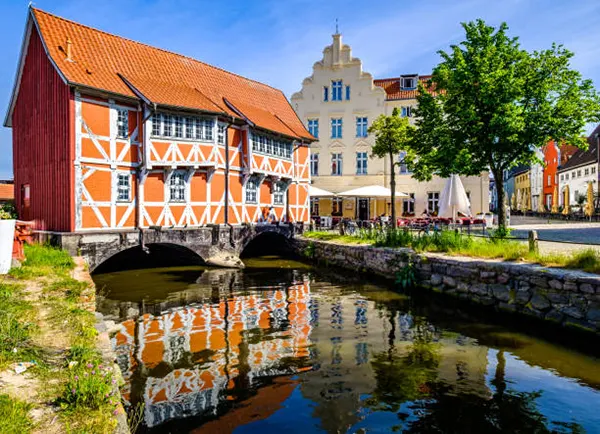
Wismar’s Role in Northern European Trade
Wismar’s emergence as a trade centre was closely linked to its geographic position between Lübeck and Rostock. As early as the 13th century, the town’s port facilities enabled it to participate actively in north-south and east-west trade corridors. Goods such as grain from Mecklenburg, fish from Scandinavia, and textiles from Flanders passed through Wismar’s docks, contributing to its growth and wealth.
Cooperation with other Hanseatic cities led to the adoption of shared standards — weights, measures, contract laws — which facilitated smooth operations across vast distances. The city also hosted regional trade fairs and gatherings, serving as a hub for merchants, diplomats, and financiers. The political neutrality provided by Hanseatic charters allowed Wismar to operate with considerable independence even amid larger territorial conflicts.
While the prominence of the port diminished over time, Wismar retained its logistical role through adaptations. In the 19th century, rail connections and industrial shipyards revitalised its trade potential. Today, the Baltic’s strategic importance in energy, tourism, and logistics has once again made Wismar relevant to regional commerce.
Ports, Products and Partnerships
Historic exports from Wismar included herring, tar, pitch, linen, and bricks — the latter often used to build Gothic structures along the Baltic coast. Imports ranged from salt and spices to wine and luxury cloth. The wealth generated allowed investment in urban defences, hospitals, and schools, contributing to a well-ordered civic life.
Partnerships with cities like Lübeck, Gdańsk, and Riga were essential for Wismar’s prosperity. These relationships were formalised through trade guilds and Hanseatic assemblies. Merchant networks relied on trust, record-keeping, and enforcement mechanisms that prefigured modern commerce.
Modern trade in Wismar includes timber, industrial components, and ship parts. The city’s participation in EU maritime initiatives also opens it to new logistics projects and sustainability standards. While no longer a central hub, Wismar’s port continues to echo the rhythms of its Hanseatic past in a changed but recognisable form.

